A Bibliometric Review of 3D-Printed Functionally Graded Materials, Focusing on Mechanical Properties
Abstract
1. Introduction
2. Overview of FGM
2.1. FGM Classification
2.2. Applications of FGMs Across Different Industries
2.2.1. Aerospace Industry
2.2.2. Biomedical Field
2.2.3. Automotive Sector
2.2.4. Energy Sector
2.2.5. Defense Applications
2.2.6. Manufacturing
2.3. Conventional Manufacturing Methods of FGM
| Method | Material Compatibility | Advantages | Disadvantages |
|---|---|---|---|
| Chemical Vapor Deposition | SiC/C, TiC/SiC, ZnO TiO2/Ti-O-Si etc. [25]. | It facilitates smooth compositional and structural transitions, ensuring seamless material integration in FGMs [24]. | High energy consumption, low efficiency, and high cost [25]. |
| Physical Vapor Deposition | |||
| Thermal spray | Metallic or non-metallic coatings | Versatility in Coating Materials [107,108] Controlled composition gradients [106] Enhanced surface properties [107,108] | Potential for porosity and residual stresses [106,109,110] High initial equipment costs [107,108] |
| Centrifugal casting | Metal-Matrix Composites [60] | Enables excellent mold filling and controlled compositional gradients by utilizing centrifugal force and material density differences [87]. | It is limited to cylindrical FGMs and restricts the types of achievable gradients [87]. |
| Combustion | TiC-Fe-Al2O3, TiC-Ni, TiC-Cu [25] | Efficient, energy-saving, and excellent in recrystallization [25]. | Porosity and structural defects |
| Powder Metallurgy | ZrO2–NiCr [111] B4C/AA7075 [112] Al-Al2O3 metal ceramic mixture [113] | Precise control over microstructure and composition [25]. Low cost, simple operation, low energy consumption, short processing time, and controllable properties [87]. | Challenges in the stacking method including warping, frustum formation, crack propagation, and lamination defects due to uneven particle distribution [84]. |
| Spark plasma sintering | ZrB2–SiC/ZrO2 ZrO2/AISI316L Ti–TiB2–B ZrB2–SiC/ZrO2 Cu/Al2O3/Cu Al2O3-Ti3SiC2 [84] | Achieving melting temperatures for different phases [84]. Ease of operation, precise control of sintering energy, as well as high sintering speed, reproducibility, safety, and reliability [114]. | The challenge lies in ensuring the powders have sufficient electrical conductivity and in achieving a consistent temperature distribution throughout the material [114]. |
2.4. 3D Printing Technology for FGM
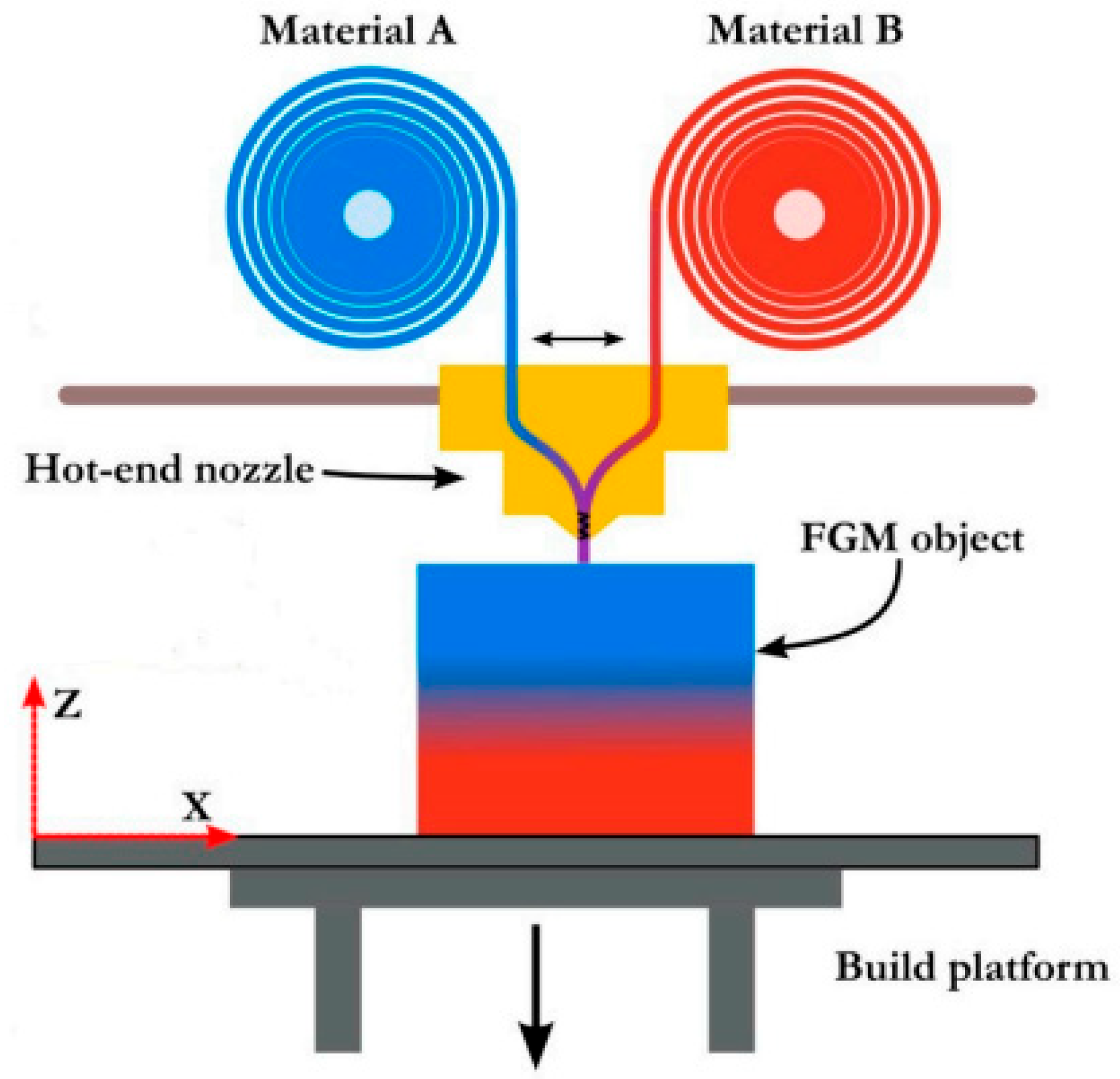
2.5. Characterization Methods for FGMs
2.6. Mechanical Behavior of 3D Printed FGM
2.7. Micromechanical Models for FGMs
3. Bibliometric Analysis Methodology
- TS = (“functionally graded materials”)
- TS = (“3D printed”) OR TS = (“additive manufacturing”)
- #1 AND #2
4. Review and Discussion
4.1. Publication Statistics
4.1.1. Annual Publication
4.1.2. Publication by Country
4.2. Collaboration Analysis
4.2.1. Institutional Collaboration
4.2.2. Countries Collaboration
4.3. Hot Research Topics
4.3.1. Keyword Co-Occurrence Analysis
4.3.2. Keyword Clustering Analysis
4.3.3. Citation Counts
4.3.4. Timeline of Keywords
4.3.5. Keywords Burst Analysis
4.4. Main Key Findings
5. Conclusions
Author Contributions
Funding
Data Availability Statement
Conflicts of Interest
References
- Bhavar, V.; Kattire, P.; Thakare, S.; Patil, S.; Singh, R. A Review on Functionally Gradient Materials (FGMs) and Their Applications. IOP Conf. Ser. Mater. Sci. Eng. 2017, 229, 012021. [Google Scholar] [CrossRef]
- Ali, E.; Althoey, F. Numerical Investigation on Blast Response of Cold-Formed Steel Framing Protected with Functionally Graded Composite Material. Buildings 2022, 12, 118. [Google Scholar] [CrossRef]
- Althoey, F.; Ali, E. A Simplified Stress Analysis of Functionally Graded Beams and Influence of Material Function on Deflection. Appl. Sci. 2021, 11, 11747. [Google Scholar] [CrossRef]
- Zhao, J.; Ai, X.; Deng, J.; Wang, J. Thermal Shock Behaviors of Functionally Graded Ceramic Tool Materials. J. Eur. Ceram. Soc. 2004, 24, 847–854. [Google Scholar] [CrossRef]
- Abubakar, A.A.; Akhtar, S.S.; Alotaibi, A.D.; Al-Athel, K.S.; Hakeem, A.S.; Adesina, A.Y. Development and Analysis of Functionally-Graded SiAlON Composites with Computationally Designed Properties for Cutting Inserts. J. Mater. Res. Technol. 2023, 23, 5861–5879. [Google Scholar] [CrossRef]
- Naik, A.K.; Nazeer, M.; Prasad, D.K.V.D.; Laha, T.; Roy, S. Development of Functionally Graded ZrB2–B4C Composites for Lightweight Ultrahigh-Temperature Aerospace Applications. Ceram. Int. 2022, 48, 33332–33339. [Google Scholar] [CrossRef]
- Williams, J.C.; Boyer, R.R. Opportunities and Issues in the Application of Titanium Alloys for Aerospace Components. Metals 2020, 10, 705. [Google Scholar] [CrossRef]
- Hohe, J.; Hardenacke, V.; Fascio, V.; Girard, Y.; Baumeister, J.; Stöbener, K.; Weise, J.; Lehmhus, D.; Pattofatto, S.; Zeng, H.; et al. Numerical and Experimental Design of Graded Cellular Sandwich Cores for Multi-Functional Aerospace Applications. Mater. Des. 2012, 39, 20–32. [Google Scholar] [CrossRef]
- Basheer, A.A. Advances in the Smart Materials Applications in the Aerospace Industries. Aircr. Eng. Aerosp. Technol. 2020, 92, 1027–1035. [Google Scholar] [CrossRef]
- Rouf, S.; Malik, A.; Raina, A.; Irfan Ul Haq, M.; Naveed, N.; Zolfagharian, A.; Bodaghi, M. Functionally Graded Additive Manufacturing for Orthopedic Applications. J. Orthop. 2022, 33, 70–80. [Google Scholar] [CrossRef]
- Watanabe, Y.; Iwasa, Y.; Sato, H.; Teramoto, A.; Abe, K. Fabrication of Titanium/Biodegradable-Polymer FGM for Medical Application. MSF 2009, 631–632, 199–204. [Google Scholar] [CrossRef]
- Shi, H.; Zhou, P.; Li, J.; Liu, C.; Wang, L. Functional Gradient Metallic Biomaterials: Techniques, Current Scenery, and Future Prospects in the Biomedical Field. Front. Bioeng. Biotechnol. 2021, 8, 616845. [Google Scholar] [CrossRef] [PubMed]
- Watari, F.; Omori, M.; Hirai, T.; Yokoyama, A.; Matsuno, H.; Uo, M.; Miyako, R.; Tamura, Y.; Kawasaki, T. Fabrication and Properties of FGM for Biomedical Application. J. Jpn. Soc. Powder Powder Metall. 2000, 47, 1226–1233. [Google Scholar] [CrossRef]
- Pompe, W.; Worch, H.; Epple, M.; Friess, W.; Gelinsky, M.; Greil, P.; Hempel, U.; Scharnweber, D.; Schulte, K. Functionally Graded Materials for Biomedical Applications. Mater. Sci. Eng. A 2003, 362, 40–60. [Google Scholar] [CrossRef]
- Parthasarathy, J.; Starly, B.; Raman, S. A Design for the Additive Manufacture of Functionally Graded Porous Structures with Tailored Mechanical Properties for Biomedical Applications. J. Manuf. Process. 2011, 13, 160–170. [Google Scholar] [CrossRef]
- Petit, C.; Montanaro, L.; Palmero, P. Functionally Graded Ceramics for Biomedical Application: Concept, Manufacturing, and Properties. Int. J. Appl. Ceram. Technol. 2018, 15, 820–840. [Google Scholar] [CrossRef]
- Ram, S.C.; Chattopadhyay, K.; Chakrabarty, I. High Temperature Tensile Properties of Centrifugally Cast In-Situ Al-Mg2Si Functionally Graded Composites for Automotive Cylinder Block Liners. J. Alloys Compd. 2017, 724, 84–97. [Google Scholar] [CrossRef]
- Jojith, R.; Radhika, N. Fabrication of LM 25/WC Functionally Graded Composite for Automotive Applications and Investigation of Its Mechanical and Wear Properties. J. Braz. Soc. Mech. Sci. Eng. 2018, 40, 292. [Google Scholar] [CrossRef]
- Tošić, G.; Bogdanović, G.; Čukanović, D.; Radaković, A. Functionally Graded Materials in Transport Vehicles—Overview, Fabrication, Application, Modelling. IOP Conf. Ser. Mater. Sci. Eng. 2022, 1271, 012014. [Google Scholar] [CrossRef]
- Saleh, B.I.; Ahmed, M.H. Development of Functionally Graded Tubes Based on Pure Al/Al2O3 Metal Matrix Composites Manufactured by Centrifugal Casting for Automotive Applications. Met. Mater. Int. 2020, 26, 1430–1440. [Google Scholar] [CrossRef]
- Arsha, A.G.; Jayakumar, E.; Rajan, T.P.D.; Antony, V.; Pai, B.C. Design and Fabrication of Functionally Graded In-Situ Aluminium Composites for Automotive Pistons. Mater. Des. 2015, 88, 1201–1209. [Google Scholar] [CrossRef]
- Mallick, A.; Gangi Setti, S.; Sahu, R.K. Centrifugally Cast Functionally Graded Materials: Fabrication and Challenges for Probable Automotive Cylinder Liner Application. Ceram. Int. 2023, 49, 8649–8682. [Google Scholar] [CrossRef]
- Ali, E.; Woldeyes, K.; Urgessa, G. Fire Performance of Functionally-Graded-Material Sheathed Load Bearing Thin-Walled Structural Framing. Fire Saf. J. 2021, 125, 103425. [Google Scholar] [CrossRef]
- Alkunte, S.; Fidan, I.; Naikwadi, V.; Gudavasov, S.; Ali, M.A.; Mahmudov, M.; Hasanov, S.; Cheepu, M. Advancements and Challenges in Additively Manufactured Functionally Graded Materials: A Comprehensive Review. J. Manuf. Mater. Process. 2024, 8, 23. [Google Scholar] [CrossRef]
- Li, Y.; Feng, Z.; Hao, L.; Huang, L.; Xin, C.; Wang, Y.; Bilotti, E.; Essa, K.; Zhang, H.; Li, Z.; et al. A Review on Functionally Graded Materials and Structures via Additive Manufacturing: From Multi-Scale Design to Versatile Functional Properties. Adv. Mater. Technol. 2020, 5, 1900981. [Google Scholar] [CrossRef]
- El-Galy, I.M.; Saleh, B.I.; Ahmed, M.H. Functionally Graded Materials Classifications and Development Trends from Industrial Point of View. SN Appl. Sci. 2019, 1, 1378. [Google Scholar] [CrossRef]
- Mitra, S.; Rahman, M.H.; Motalab, M.; Rakib, T.; Bose, P. Investigation on the Mechanical Properties of Functionally Graded Nickel and Aluminium Alloy by Molecular Dynamics Study. arXiv 2020, arXiv:2004.05651. [Google Scholar]
- Ait Ferhat, Y.; Chorfi, H.; Abacha, I.; Benchikh, L.; Kebaili, M.; Blaoui, M.M.; Boulenouar, A. Evaluation of Stress Intensity Factors in Functionally Graded Plate under Mechanical and Thermal Loadings. Int. J. Interact. Des. Manuf. 2023, 17, 2745–2753. [Google Scholar] [CrossRef]
- Tian, J.; Jing, G.; Han, X.; Hu, G.; Huo, S. Understanding the Thermal Problem of Variable Gradient Functionally Graded Plate Based on Hybrid Numerical Method under Linear Heat Source. Adv. Mech. Eng. 2021, 13, 16878140211017810. [Google Scholar] [CrossRef]
- Han, D.; Fan, H.; Yan, C.; Wang, T.; Yang, Y.; Ali, S.; Wang, G. Heat Conduction and Cracking of Functionally Graded Materials Using an FDEM-Based Thermo-Mechanical Coupling Model. Appl. Sci. 2022, 12, 12279. [Google Scholar] [CrossRef]
- Inala, R. Influence of Hygrothermal Environment and FG Material on Natural Frequency and Parametric Instability of Plates. Mech. Adv. Compos. Struct. 2019, 7, 89–101. [Google Scholar] [CrossRef]
- Zenkour, A.M. Hygro-Thermo-Mechanical Effects on FGM Plates Resting on Elastic Foundations. Compos. Struct. 2010, 93, 234–238. [Google Scholar] [CrossRef]
- Shariyat, M.; Ghafourinam, M. Hygrothermomechanical Creep and Stress Redistribution Analysis of Thick-Walled FGM Spheres with Temperature and Moisture Dependent Material Properties and Inelastic Radius Changes. Int. J. Press. Vessel. Pip. 2019, 169, 94–114. [Google Scholar] [CrossRef]
- Pal, A.; Singh, A.K.; Lakshmi Vara Prasad, M.; Sahu, A. Hygro-Thermal Effect on Dynamic Response of Functionally Graded Plates. In Recent Developments in Structural Engineering, Volume 5; Goel, M.D., Biswas, R., Dhanvijay, S., Eds.; Lecture Notes in Civil Engineering; Springer Nature: Singapore, 2025; Volume 550, pp. 401–409. ISBN 978-981-9770-42-7. [Google Scholar]
- Parihar, R.S.; Setti, S.G.; Sahu, R.K. Recent Advances in the Manufacturing Processes of Functionally Graded Materials: A Review. Sci. Eng. Compos. Mater. 2018, 25, 309–336. [Google Scholar] [CrossRef]
- Kwon, H.; Cho, S.; Leparoux, M.; Kawasaki, A. Dual-Nanoparticulate-Reinforced Aluminum Matrix Composite Materials. Nanotechnology 2012, 23, 225704. [Google Scholar] [CrossRef]
- Kwon, H.; Leparoux, M.; Kawasaki, A. Functionally Graded Dual-Nanoparticulate-Reinforced Aluminium Matrix Bulk Materials Fabricated by Spark Plasma Sintering. J. Mater. Sci. Technol. 2014, 30, 736–742. [Google Scholar] [CrossRef]
- Gantayat, A.K.; Sutar, M.K.; Mohanty, J.R. Dynamic Characteristic of Graphene Reinforced Axial Functionally Graded Beam Using Finite Element Analysis. Mater. Today Proc. 2022, 62, 5923–5927. [Google Scholar] [CrossRef]
- Sasaki, M.; Hirai, T. Thermal Fatigue Resistance of CVD SiC/C Functionally Gradient Material. J. Eur. Ceram. Soc. 1994, 14, 257–260. [Google Scholar] [CrossRef]
- Seifried, S.; Winterer, M.; Hahn, H. Nanocrystalline Gradient Films through Chemical Vapor Synthesis. Scr. Mater. 2001, 44, 2165–2168. [Google Scholar] [CrossRef]
- Dobrzański, L.A.; Żukowska, L.W.; Mikuła, J.; Gołombek, K.; Pakuła, D.; Pancielejko, M. Structure and Mechanical Properties of Gradient PVD Coatings. J. Mater. Process. Technol. 2008, 201, 310–314. [Google Scholar] [CrossRef]
- Wang, X.; Chu, X.; Zhao, H.; Lu, S.; Fang, F.; Li, J.; Fang, X.; Wei, Z.; Wang, X.; Du, P.; et al. Controllable Growth of Functional Gradient ZnO Material Using Chemical Vapor Deposition. Integr. Ferroelectr. 2014, 151, 1–6. [Google Scholar] [CrossRef]
- Khor, K.A.; Gu, Y.W. Effects of Residual Stress on the Performance of Plasma Sprayed Functionally Graded ZrO2/NiCoCrAlY Coatings. Mater. Sci. Eng. A 2000, 277, 64–76. [Google Scholar] [CrossRef]
- Pakseresht, A.H.; Ghasali, E.; Nejati, M.; Shirvanimoghaddam, K.; Javadi, A.H.; Teimouri, R. Development Empirical-Intelligent Relationship between Plasma Spray Parameters and Coating Performance of Yttria-Stabilized Zirconia. Int. J. Adv. Manuf. Technol. 2015, 76, 1031–1045. [Google Scholar] [CrossRef]
- Pakseresht, A.H.; Javadi, A.H.; Nejati, M.; Shirvanimoghaddam, K.; Ghasali, E.; Teimouri, R. Statistical Analysis and Multiobjective Optimization of Process Parameters in Plasma Spraying of Partially Stabilized Zirconia. Int. J. Adv. Manuf. Technol. 2014, 75, 739–753. [Google Scholar] [CrossRef]
- Ivosevic, M.; Knight, R.; Kalidindi, S.R.; Palmese, G.R.; Sutter, J.K. Adhesive/Cohesive Properties of Thermally Sprayed Functionally Graded Coatings for Polymer Matrix Composites. J. Therm. Spray Technol. 2005, 14, 45–51. [Google Scholar] [CrossRef]
- Ma, J.; Tan, G.E.B. Processing and Characterization of Metal–Ceramics Functionally Gradient Materials. J. Mater. Process. Technol. 2001, 113, 446–449. [Google Scholar] [CrossRef]
- Rajasekhar, K.; Suresh Babu, V.; Davidson, M.J. Microstructural and Mechanical Properties of Al-Cu Functionally Graded Materials Fabricated by Powder Metallurgy Method. Mater. Today Proc. 2021, 41, 1156–1159. [Google Scholar] [CrossRef]
- Chouhan, M.; Thakur, L.; Kumar, P. Parametric Optimization and Impact Behaviour of AA7075/SiC FGM Fabricated by Hot Compaction Powder Metallurgy Process. Mater. Today Commun. 2024, 38, 107833. [Google Scholar] [CrossRef]
- Srinivas, P.N.S.; Ravindra, B.P.; Balakrishna, B. Microstructural, Mechanical and Tribological Characterization on the Al Based Functionally Graded Material Fabricated Powder Metallurgy. Mater. Res. Express 2020, 7, 026513. [Google Scholar] [CrossRef]
- Jin, G.; Takeuchi, M.; Honda, S.; Nishikawa, T.; Awaji, H. Properties of Multilayered Mullite/Mo Functionally Graded Materials Fabricated by Powder Metallurgy Processing. Mater. Chem. Phys. 2005, 89, 238–243. [Google Scholar] [CrossRef]
- Tokita, M. Development of Large-Size Ceramic/Metal Bulk FGM Fabricated by Spark Plasma Sintering. Mater. Sci. Forum 1999, 308–311, 83–88. [Google Scholar] [CrossRef]
- Qiao, Z.; Räthel, J.; Berger, L.-M.; Herrmann, M. Investigation of Binderless WC–TiC–Cr3C2 Hard Materials Prepared by Spark Plasma Sintering (SPS). Int. J. Refract. Met. Hard Mater. 2013, 38, 7–14. [Google Scholar] [CrossRef]
- Ghasali, E.; Baghchesaraee, K.; Orooji, Y. Study of the Potential Effect of Spark Plasma Sintering on the Preparation of Complex FGM/Laminated WC-Based Cermet. Int. J. Refract. Met. Hard Mater. 2020, 92, 105328. [Google Scholar] [CrossRef]
- Hong, C.-Q.; Zhang, X.-H.; Li, W.-J.; Han, J.-C.; Meng, S.-H. A Novel Functionally Graded Material in the ZrB2–SiC and ZrO2 System by Spark Plasma Sintering. Mater. Sci. Eng. A 2008, 498, 437–441. [Google Scholar] [CrossRef]
- Velhinho, A.; Rocha, L.A. Longitudinal Centrifugal Casting of Metal-Matrix Functionally Graded Composites: An Assessment of Modelling Issues. J. Mater. Sci. 2011, 46, 3753–3765. [Google Scholar] [CrossRef]
- El-Galy, I.M.; Ahmed, M.H.; Bassiouny, B.I. Characterization of Functionally Graded Al-SiC p Metal Matrix Composites Manufactured by Centrifugal Casting. Alex. Eng. J. 2017, 56, 371–381. [Google Scholar] [CrossRef]
- Verma, R.K.; Parganiha, D.; Chopkar, M. A Review on Fabrication and Characteristics of Functionally Graded Aluminum Matrix Composites Fabricated by Centrifugal Casting Method. SN Appl. Sci. 2021, 3, 227. [Google Scholar] [CrossRef]
- Rajan, T.P.D.; Jayakumar, E.; Pai, B.C. Developments in Solidification Processing of Functionally Graded Aluminium Alloys and Composites by Centrifugal Casting Technique. Trans. Indian Inst. Met. 2012, 65, 531–537. [Google Scholar] [CrossRef]
- Pradeep, A.D.; Rameshkumar, T. Review on Centrifugal Casting of Functionally Graded Materials. Mater. Today Proc. 2021, 45, 729–734. [Google Scholar] [CrossRef]
- Ghanavati, R.; Naffakh-Moosavy, H. Additive Manufacturing of Functionally Graded Metallic Materials: A Review of Experimental and Numerical Studies. J. Mater. Res. Technol. 2021, 13, 1628–1664. [Google Scholar] [CrossRef]
- Diniță, A.; Neacșa, A.; Portoacă, A.I.; Tănase, M.; Ilinca, C.N.; Ramadan, I.N. Additive Manufacturing Post-Processing Treatments, a Review with Emphasis on Mechanical Characteristics. Materials 2023, 16, 4610. [Google Scholar] [CrossRef] [PubMed]
- Fidan, I.; Huseynov, O.; Ali, M.A.; Alkunte, S.; Rajeshirke, M.; Gupta, A.; Hasanov, S.; Tantawi, K.; Yasa, E.; Yilmaz, O.; et al. Recent Inventions in Additive Manufacturing: Holistic Review. Inventions 2023, 8, 103. [Google Scholar] [CrossRef]
- Zhang, C.; Chen, F.; Huang, Z.; Jia, M.; Chen, G.; Ye, Y.; Lin, Y.; Liu, W.; Chen, B.; Shen, Q.; et al. Additive Manufacturing of Functionally Graded Materials: A Review. Mater. Sci. Eng. A 2019, 764, 138209. [Google Scholar] [CrossRef]
- Ansari, M.; Jabari, E.; Toyserkani, E. Opportunities and Challenges in Additive Manufacturing of Functionally Graded Metallic Materials via Powder-Fed Laser Directed Energy Deposition: A Review. J. Mater. Process. Technol. 2021, 294, 117117. [Google Scholar] [CrossRef]
- Hasanov, S.; Gupta, A.; Nasirov, A.; Fidan, I. Mechanical Characterization of Functionally Graded Materials Produced by the Fused Filament Fabrication Process. J. Manuf. Process. 2020, 58, 923–935. [Google Scholar] [CrossRef]
- Sevim, C.; Caliskan, U.; Demirbas, M.D.; Ekrikaya, S.; Apalak, M.K. Numerical Modeling of Mechanical Behavior of Functionally Graded Polylactic Acid–Acrylonitrile Benzidine Styrene Produced via Fused Deposition Modeling: Experimental Observations. Materials 2023, 16, 5177. [Google Scholar] [CrossRef]
- Srivastava, M.; Maheshwari, S.; Kundra, T.K. Virtual Modelling and Simulation of Functionally Graded Material Component Using FDM Technique. Mater. Today Proc. 2015, 2, 3471–3480. [Google Scholar] [CrossRef]
- Chung, H.; Das, S. Functionally Graded Nylon-11/Silica Nanocomposites Produced by Selective Laser Sintering. Mater. Sci. Eng. A 2008, 487, 251–257. [Google Scholar] [CrossRef]
- Chung, H.; Das, S. Processing and Properties of Glass Bead Particulate-Filled Functionally Graded Nylon-11 Composites Produced by Selective Laser Sintering. Mater. Sci. Eng. A 2006, 437, 226–234. [Google Scholar] [CrossRef]
- Lima, D.D.; Mantri, S.A.; Mikler, C.V.; Contieri, R.; Yannetta, C.J.; Campo, K.N.; Lopes, E.S.; Styles, M.J.; Borkar, T.; Caram, R.; et al. Laser Additive Processing of a Functionally Graded Internal Fracture Fixation Plate. Mater. Des. 2017, 130, 8–15. [Google Scholar] [CrossRef]
- Karnati, S.; Zhang, Y.; Liou, F.F.; Newkirk, J.W. On the Feasibility of Tailoring Copper–Nickel Functionally Graded Materials Fabricated through Laser Metal Deposition. Metals 2019, 9, 287. [Google Scholar] [CrossRef]
- Li, W.; Yan, L.; Chen, X.; Zhang, J.; Zhang, X.; Liou, F. Directed Energy Depositing a New Fe-Cr-Ni Alloy with Gradually Changing Composition with Elemental Powder Mixes and Particle Size’ Effect in Fabrication Process. J. Mater. Process. Technol. 2018, 255, 96–104. [Google Scholar] [CrossRef]
- Han, C.; Li, Y.; Wang, Q.; Cai, D.; Wei, Q.; Yang, L.; Wen, S.; Liu, J.; Shi, Y. Titanium/Hydroxyapatite (Ti/HA) Gradient Materials with Quasi-Continuous Ratios Fabricated by SLM: Material Interface and Fracture Toughness. Mater. Des. 2018, 141, 256–266. [Google Scholar] [CrossRef]
- Sing, S.L.; Lam, L.P.; Zhang, D.Q.; Liu, Z.H.; Chua, C.K. Interfacial Characterization of SLM Parts in Multi-Material Processing: Intermetallic Phase Formation between AlSi10Mg and C18400 Copper Alloy. Mater. Charact. 2015, 107, 220–227. [Google Scholar] [CrossRef]
- Demir, A.G.; Previtali, B. Multi-Material Selective Laser Melting of Fe/Al-12Si Components. Manuf. Lett. 2017, 11, 8–11. [Google Scholar] [CrossRef]
- Mao, S.; Zhang, D.Z.; Ren, Z.; Fu, G.; Ma, X. Effects of Process Parameters on Interfacial Characterization and Mechanical Properties of 316L/CuCrZr Functionally Graded Material by Selective Laser Melting. J. Alloys Compd. 2022, 899, 163256. [Google Scholar] [CrossRef]
- Choy, S.Y.; Sun, C.-N.; Sin, W.J.; Leong, K.F.; Su, P.-C.; Wei, J.; Wang, P. Superior Energy Absorption of Continuously Graded Microlattices by Electron Beam Additive Manufacturing. Virtual Phys. Prototyp. 2021, 16, 14–28. [Google Scholar] [CrossRef]
- Hinojos, A.; Mireles, J.; Reichardt, A.; Frigola, P.; Hosemann, P.; Murr, L.E.; Wicker, R.B. Joining of Inconel 718 and 316 Stainless Steel Using Electron Beam Melting Additive Manufacturing Technology. Mater. Des. 2016, 94, 17–27. [Google Scholar] [CrossRef]
- Zhou, J.; Li, H.; Yu, Y.; Li, Y.; Qian, Y.; Firouzian, K.; Lin, F. Fabrication of Functionally Graded Materials from a Single Material by Selective Evaporation in Electron Beam Powder Bed Fusion. Mater. Sci. Eng. A 2020, 793, 139827. [Google Scholar] [CrossRef]
- Balla, V.K.; DeVasConCellos, P.D.; Xue, W.; Bose, S.; Bandyopadhyay, A. Fabrication of Compositionally and Structurally Graded Ti–TiO2 Structures Using Laser Engineered Net Shaping (LENS). Acta Biomater. 2009, 5, 1831–1837. [Google Scholar] [CrossRef]
- Li, L.; Wang, J.; Lin, P.; Liu, H. Microstructure and Mechanical Properties of Functionally Graded TiCp/Ti6Al4V Composite Fabricated by Laser Melting Deposition. Ceram. Int. 2017, 43, 16638–16651. [Google Scholar] [CrossRef]
- Shi, J.M.; Zhang, L.X.; Chang, Q.; Sun, Z.; Feng, J.C. Strengthening the ZrC-SiC Ceramic and TC4 Alloy Brazed Joint Using Laser Additive Manufactured Functionally Graded Material Layers. Ceram. Int. 2018, 44, 11060–11069. [Google Scholar] [CrossRef]
- Naebe, M.; Shirvanimoghaddam, K. Functionally Graded Materials: A Review of Fabrication and Properties. Appl. Mater. Today 2016, 5, 223–245. [Google Scholar] [CrossRef]
- Mishra, V.; Negi, S.; Kar, S. FDM-Based Additive Manufacturing of Recycled Thermoplastics and Associated Composites. J. Mater. Cycles Waste Manag. 2023, 25, 758–784. [Google Scholar] [CrossRef] [PubMed]
- Sam, M.; Jojith, R.; Radhika, N. Progression in Manufacturing of Functionally Graded Materials and Impact of Thermal Treatment—A Critical Review. J. Manuf. Process. 2021, 68, 1339–1377. [Google Scholar] [CrossRef]
- Mohammadi, M.; Rajabi, M.; Ghadiri, M. Functionally Graded Materials (FGMs): A Review of Classifications, Fabrication Methods and Their Applications. Process. Appl. Ceram. 2021, 15, 319–343. [Google Scholar] [CrossRef]
- Nohut, S.; Schwentenwein, M. Vat Photopolymerization Additive Manufacturing of Functionally Graded Materials: A Review. J. Manuf. Mater. Process 2022, 6, 17. [Google Scholar] [CrossRef]
- Muthutantri, A.; Huang, J.; Edirisinghe, M. Novel Preparation of Graded Porous Structures for Medical Engineering. J. R. Soc. Interface 2008, 5, 1459–1467. [Google Scholar] [CrossRef]
- Radhika, N.; Kamireddy, T.; Kanithi, R.; Shivashankar, A. Fabrication of Cu-Sn-Ni/SiC FGM for Automotive Applications: Investigation of Its Mechanical and Tribological Properties. Silicon 2018, 10, 1705–1716. [Google Scholar] [CrossRef]
- Saied, M.; Ahmed, K.; Ahmed, M.; Nemat-Alla, M.; El-Sebaie, M. Investigations of Solid Oxide Fuel Cells with Functionally Graded Electrodes for High Performance and Safe Thermal Stress. Int. J. Hydrogen Energy 2017, 42, 15887–15902. [Google Scholar] [CrossRef]
- Sharma, R.K.; Djurado, E. Functionally Graded and Homogeneous Composites of La2NiO4+δ and Lan+1NinO3n+1 (n = 2 and 3) Solid Oxide Fuel Cell Cathodes. J. Mater. Chem. A 2017, 5, 22277–22287. [Google Scholar] [CrossRef]
- Caño, P.; Hinojosa, M.; Nguyen, H.; Morgan, A.; Fuertes Marrón, D.; García, I.; Johnson, A.; Rey-Stolle, I. Hybrid III-V/SiGe Solar Cells Grown on Si Substrates through Reverse Graded Buffers. Sol. Energy Mater. Sol. Cells 2020, 205, 110246. [Google Scholar] [CrossRef]
- Ghosh, K.B.; Mukhopadhyay, J.; Basu, R.N. Functionally Graded Doped Lanthanum Cobalt Ferrite and Ceria-Based Composite Interlayers for Advancing the Performance Stability in Solid Oxide Fuel Cell. J. Power Sources 2016, 328, 15–27. [Google Scholar] [CrossRef]
- Übeyli, M.; Balci, E.; Sarikan, B.; Öztaş, M.K.; Camuşcu, N.; Yildirim, R.O.; Keleş, Ö. The Ballistic Performance of SiC–AA7075 Functionally Graded Composite Produced by Powder Metallurgy. Mater. Des. 2014, 56, 31–36. [Google Scholar] [CrossRef]
- Chao, Z.L.; Jiang, L.T.; Chen, G.Q.; Qiao, J.; Yu, Z.H.; Cao, Y.F.; Wu, G.H. The Microstructure and Ballistic Performance of B4C/AA2024 Functionally Graded Composites with Wide Range B4C Volume Fraction. Compos. Part. B Eng. 2019, 161, 627–638. [Google Scholar] [CrossRef]
- Balci, E.; Sarikan, B.; Übeyli, M.; Camuşcu, N.; Yildirim, R.O. On the Ballistic Performance of the AA7075 Based Functionally Gradeinforcement. Met. Mater. 2021, 51, 257–262. [Google Scholar] [CrossRef]
- Gooch, W.A.; Chen, B.H.C.; Burkins, M.S.; Palicka, R.; Rubin, J.J.; Ravichandran, R. Development and Ballistic Testing of a Functionally Gradient Ceramic/Metal Applique. Mater. Sci. Forum 1999, 308–311, 614–621. [Google Scholar] [CrossRef]
- Wang, Y.; Liu, Q.; Zhang, B.; Wang, H.; Hazell, P.J.; Han, Z.; Li, J.; Li, B.; Li, L.; Liu, F.; et al. Ballistic Performance of Functionally Graded B4C/Al Composites without Abrupt Interfaces: Experiments and Simulations. J. Mater. Res. Technol. 2023, 25, 1011–1029. [Google Scholar] [CrossRef]
- Chin, E.S.C. Army Focused Research Team on Functionally Graded Armor Composites. Mater. Sci. Eng. A 1999, 259, 155–161. [Google Scholar] [CrossRef]
- Gupta, N.; Basu, B.; Prasad, V.; Vemuri, M. Ballistic Studies on TiB2-Ti Functionally Graded Armor Ceramics. Def. Sci. J. 2012, 62, 382–389. [Google Scholar] [CrossRef]
- Bertolete, M.; Barbosa, P.A.; De Rossi, W.; Fredericci, C.; Machado, I.F. Mechanical Characterisation and Machining Evaluation of Ceramic Cutting Tools Functionally Graded with Six Layers. Ceram. Int. 2020, 46, 15137–15145. [Google Scholar] [CrossRef]
- Cho, J.R.; Park, H.J. High Strength FGM Cutting Tools: Finite Element Analysis on Thermoelastic Characteristics. J. Mater. Process. Technol. 2002, 130–131, 351–356. [Google Scholar] [CrossRef]
- Yadav, S.; Liu, S.; Singh, R.K.; Sharma, A.K.; Rawat, P. A State-of-Art Review on Functionally Graded Materials (FGMs) Manufactured by 3D Printing Techniques: Advantages, Existing Challenges, and Future Scope. J. Manuf. Process. 2024, 131, 2051–2072. [Google Scholar] [CrossRef]
- Sampath, S.; Herman, H.; Shimoda, N.; Saito, T. Thermal Spray Processing of FGMs. MRS Bull. 1995, 20, 27–31. [Google Scholar] [CrossRef]
- Łatka, L.; Pawłowski, L.; Winnicki, M.; Sokołowski, P.; Małachowska, A.; Kozerski, S. Review of Functionally Graded Thermal Sprayed Coatings. Appl. Sci. 2020, 10, 5153. [Google Scholar] [CrossRef]
- Thermal Spray Coatings Advantages & Disadvantages. IRS. Available online: https://www.irsltd.co.uk/advantages-and-disadvantages-of-thermal-spray-coatings/ (accessed on 5 February 2025).
- The Advantages and Disadvantages of Thermal Spray. Hayden Corp. Available online: https://www.haydencorp.com/the-advantages-and-disadvantages-of-thermal-spray (accessed on 5 February 2025).
- Kamara, A.M.; Davey, K. Simplified Models for Residual Stress Prediction in Thermally Sprayed Coatings. J. Mech. Eng. Sci. 2008, 222, 2053–2068. [Google Scholar] [CrossRef]
- Clyne, T.W.; Gill, S.C. Residual Stresses in Thermal Spray Coatings and Their Effect on Interfacial Adhesion: A Review of Recent Work. J. Therm. Spray Technol. 1996, 5, 401–418. [Google Scholar] [CrossRef]
- Zhu, J.; Lai, Z.; Yin, Z.; Jeon, J.; Lee, S. Fabrication of ZrO2–NiCr Functionally Graded Material by Powder Metallurgy. Mater. Chem. Phys. 2001, 68, 130–135. [Google Scholar] [CrossRef]
- Chouhan, M.; Thakur, L.; Kumar, P. Parametric Optimization of Hot Pressing Powder Metallurgy Process for Improved Toughness and Microhardness of Multilayered B4C/AA7075 FGM. Int. J. Interact. Des. Manuf. 2024, 1–17. [Google Scholar] [CrossRef]
- Nirmalkumar, R.; Sohgaura, R.; Kadoli, R.; Joladarashi, S. Powder Metallurgy Process towards Functional Gradation of Al-Al2O3 Metal Ceramic Mixture Samples. IOP Conf. Ser. Mater. Sci. Eng. 2019, 624, 012013. [Google Scholar] [CrossRef]
- Suarez, M.; Fernandez, A.; Menendez, J.L.; Torrecillas, R.; Kessel, H.U.; Hennicke, J.; Kirchner, R.; Kessel, T. Challenges and Opportunities for Spark Plasma Sintering: A Key Technology for a New Generation of Materials. In Sintering Applications; Ertug, B., Ed.; InTech: Rijeka, Croatia, 2013; ISBN 978-953-51-0974-7. [Google Scholar]
- Szymczyk-Ziółkowska, P.; Łabowska, M.B.; Detyna, J.; Michalak, I.; Gruber, P. A Review of Fabrication Polymer Scaffolds for Biomedical Applications Using Additive Manufacturing Techniques. Biocybern. Biomed. Eng. 2020, 40, 624–638. [Google Scholar] [CrossRef]
- Alkunte, S.; Fidan, I. Machine Learning-Based Fatigue Life Prediction of Functionally Graded Materials Using Material Extrusion Technology. J. Compos. Sci. 2023, 7, 420. [Google Scholar] [CrossRef]
- Gong, Y.; Jiang, L.; Zhang, H.; Wang, Z.; Hu, N. Temperature Effects on the Mode II Delamination Propagation Behavior of Aerospace-Grade CFRP Multidirectional Laminates. Mech. Adv. Mater. Struct. 2024, 31, 2170–2183. [Google Scholar] [CrossRef]
- Huang, X.; Kang, N.; Coddet, P.; El Mansori, M. Effects of Test Temperature on the Ball-on-Slab Wear Behavior of Nickel-Titanium Shape Memory Alloys Fabricated by Laser Powder Bed Fusion. Tribol. Int. 2024, 196, 109666. [Google Scholar] [CrossRef]
- Wei, Q.; Xie, Y.; Teng, Q.; Shen, M.; Sun, S.; Cai, C. Crack Types, Mechanisms, and Suppression Methods during High-Energy Beam Additive Manufacturing of Nickel-Based Superalloys: A Review. Chin. J. Mech. Eng. Addit. Manuf. Front. 2022, 1, 100055. [Google Scholar] [CrossRef]
- Zhou, Z.; Huang, L.; Shang, Y.; Li, Y.; Jiang, L.; Lei, Q. Causes Analysis on Cracks in Nickel-Based Single Crystal Superalloy Fabricated by Laser Powder Deposition Additive Manufacturing. Mater. Des. 2018, 160, 1238–1249. [Google Scholar] [CrossRef]
- Polonsky, A.T.; Echlin, M.P.; Lenthe, W.C.; Dehoff, R.R.; Kirka, M.M.; Pollock, T.M. Defects and 3D Structural Inhomogeneity in Electron Beam Additively Manufactured Inconel 718. Mater. Charact. 2018, 143, 171–181. [Google Scholar] [CrossRef]
- Moran, T.P.; Warner, D.H.; Soltani-Tehrani, A.; Shamsaei, N.; Phan, N. Spatial Inhomogeneity of Build Defects across the Build Plate in Laser Powder Bed Fusion. Addit. Manuf. 2021, 47, 102333. [Google Scholar] [CrossRef]
- Slotwinski, J.A.; Garboczi, E.J.; Hebenstreit, K.M. Porosity Measurements and Analysis for Metal Additive Manufacturing Process Control. J. Res. Natl. Inst. Stan. 2014, 119, 494. [Google Scholar] [CrossRef]
- Frieden Templeton, W.; Hinnebusch, S.; Strayer, S.T.; To, A.C.; Pistorius, P.C.; Narra, S.P. A Mechanistic Explanation of Shrinkage Porosity in Laser Powder Bed Fusion Additive Manufacturing. Acta Mater. 2024, 266, 119632. [Google Scholar] [CrossRef]
- Kok, Y.; Tan, X.P.; Wang, P.; Nai, M.L.S.; Loh, N.H.; Liu, E.; Tor, S.B. Anisotropy and Heterogeneity of Microstructure and Mechanical Properties in Metal Additive Manufacturing: A Critical Review. Mater. Des. 2018, 139, 565–586. [Google Scholar] [CrossRef]
- Fergani, O.; Berto, F.; Welo, T.; Liang, S.Y. Analytical Modelling of Residual Stress in Additive Manufacturing. Fatigue Fract. Eng. Mat. Struct. 2017, 40, 971–978. [Google Scholar] [CrossRef]
- Chen, F.; Yan, W. High-Fidelity Modelling of Thermal Stress for Additive Manufacturing by Linking Thermal-Fluid and Mechanical Models. Mater. Des. 2020, 196, 109185. [Google Scholar] [CrossRef]
- Krumova, M.; Klingshirn, C.; Haupert, F.; Friedrich, K. Microhardness Studies on Functionally Graded Polymer Composites. Compos. Sci. Technol. 2001, 61, 557–563. [Google Scholar] [CrossRef]
- Wen, Z.; Li, M. Compressive Properties of Functionally Graded Bionic Bamboo Lattice Structures Fabricated by FDM. Materials 2021, 14, 4410. [Google Scholar] [CrossRef]
- Atta, M.; Abu-Sinna, A.; Mousa, S.; Sallam, H.; Abd-Elhady, A. Flexural Behavior of Functionally Graded Polymeric Composite Beams. J. Ind. Text. 2022, 51, 4268S–4289S. [Google Scholar] [CrossRef]
- Ziadoon Mohammed Rahi, A.; Al-Khazraji, A.N.; Shandookh, A.A. Mechanical Properties Investigation of Composite FGM Fabricated from Al/Zn. Open Eng. 2022, 12, 789–798. [Google Scholar] [CrossRef]
- Bobbio, L.D.; Bocklund, B.; Liu, Z.-K.; Beese, A.M. Tensile Behavior of Stainless Steel 304L to Ni-20Cr Functionally Graded Material: Experimental Characterization and Computational Simulations. Materialia 2021, 18, 101151. [Google Scholar] [CrossRef]
- Naik, A.K.; Pillari, L.K.; Patel, M.; Bichler, L.; Laha, T.; Roy, S. Effect of Graded Microstructure on the Modulus, Hardness, and Strength of Hot-Pressed ZrB2-B4C FGM. J. Mater. Sci. 2024, 59, 8682–8705. [Google Scholar] [CrossRef]
- Jamaludin, M.I.H.; Jamian, S.; Awang, M.K.; Kamarudin, K.A.; Nor, M.K.M.; Ismail, A.E. Characterization of Continuous Gradient Functionally Graded Natural Fiber Reinforced Polymer Composites. IOP Conf. Ser. Mater. Sci. Eng. 2020, 824, 012019. [Google Scholar] [CrossRef]
- Shahrjerdi, A.; Mustapha, F.; Sapuan, S.M.; Bayat, M.; Abdul Majid, D.L.A.; Zahari, R. Optimal Sintering Procedure to Fabrication of Functionally Graded Hydroxyapatite-Titanium. Key Eng. Mater. 2011, 471–472, 140–144. [Google Scholar] [CrossRef]
- Gupta, R.; Kumar, R.; Chaubey, A.K.; Kanpara, S.; Khirwadkar, S.S. Mechanical and Microstructural Characterization of W–Cu FGM Fabricated by One-Step Sintering Method through PM Route. IOP Conf. Ser. Mater. Sci. Eng. 2018, 338, 012042. [Google Scholar] [CrossRef]
- Chen, Y.H.; Li, T.; Ma, J. Investigation on the Electrophoretic Deposition of a FGM Piezoelectric Monomorph Actuator. J. Mater. Sci. 2003, 38, 2803–2807. [Google Scholar] [CrossRef]
- Alkunte, S.; Gupta, M.; Rajeshirke, M.; More, N.; Cheepu, M.; Gupta, A.; Lakal, N.; Shingare, K.; Alifui-Segbaya, F.; Fidan, I. Functionally Graded Metamaterials: Fabrication Techniques, Modeling, and Applications—A Review. Processes 2024, 12, 2252. [Google Scholar] [CrossRef]
- Daram, P.; Hiroto, T.; Watanabe, M. Microstructure and Phase Evolution of Functionally Graded Multi-Materials of Ni–Ti Alloy Fabricated by Laser Powder Bed Fusion Process. J. Mater. Res. Technol. 2023, 23, 5559–5572. [Google Scholar] [CrossRef]
- Mahamood, R.M.; Akinlabi, E.T. Laser Metal Deposition of Functionally Graded Ti6Al4V/TiC. Mater. Des. 2015, 84, 402–410. [Google Scholar] [CrossRef]
- Zuback, J.S.; Palmer, T.A.; DebRoy, T. Additive Manufacturing of Functionally Graded Transition Joints between Ferritic and Austenitic Alloys. J. Alloys Compd. 2019, 770, 995–1003. [Google Scholar] [CrossRef]
- Wang, J.; Pan, Z.; Ma, Y.; Lu, Y.; Shen, C.; Cuiuri, D.; Li, H. Characterization of Wire Arc Additively Manufactured Titanium Aluminide Functionally Graded Material: Microstructure, Mechanical Properties and Oxidation Behaviour. Mater. Sci. Eng. A 2018, 734, 110–119. [Google Scholar] [CrossRef]
- Liu, Y.; Liang, C.; Liu, W.; Ma, Y.; Liu, C.; Zhang, C. Dilution of Al and V through Laser Powder Deposition Enables a Continuously Compositionally Ti/Ti6Al4V Graded Structure. J. Alloys Compd. 2018, 763, 376–383. [Google Scholar] [CrossRef]
- Feenstra, D.R.; Molotnikov, A.; Birbilis, N. Effect of Energy Density on the Interface Evolution of Stainless Steel 316L Deposited upon INC 625 via Directed Energy Deposition. J. Mater. Sci. 2020, 55, 13314–13328. [Google Scholar] [CrossRef]
- Kang, N.; Lin, X.; Mansori, M.E.; Wang, Q.Z.; Lu, J.L.; Coddet, C.; Huang, W.D. On the Effect of the Thermal Cycle during the Directed Energy Deposition Application to the In-Situ Production of a Ti-Mo Alloy Functionally Graded Structure. Addit. Manuf. 2020, 31, 100911. [Google Scholar] [CrossRef]
- Li, W.; Karnati, S.; Kriewall, C.; Liou, F.; Newkirk, J.; Brown Taminger, K.M.; Seufzer, W.J. Fabrication and Characterization of a Functionally Graded Material from Ti-6Al-4V to SS316 by Laser Metal Deposition. Addit. Manuf. 2017, 14, 95–104. [Google Scholar] [CrossRef]
- Zhang, Y.Z.; Liu, Y.T.; Zhao, X.H.; Tang, Y.J. The Interface Microstructure and Tensile Properties of Direct Energy Deposited TC11/Ti2AlNb Dual Alloy. Mater. Des. 2016, 110, 571–580. [Google Scholar] [CrossRef]
- Popovich, V.A.; Borisov, E.V.; Popovich, A.A.; Sufiiarov, V.S.; Masaylo, D.V.; Alzina, L. Functionally Graded Inconel 718 Processed by Additive Manufacturing: Crystallographic Texture, Anisotropy of Microstructure and Mechanical Properties. Mater. Des. 2017, 114, 441–449. [Google Scholar] [CrossRef]
- Al-Jamal, O.M.; Hinduja, S.; Li, L. Characteristics of the Bond in Cu–H13 Tool Steel Parts Fabricated Using SLM. CIRP Ann. 2008, 57, 239–242. [Google Scholar] [CrossRef]
- Singh, D.D.; Arjula, S.; Reddy, A.R. Influence of Laser Power on Mechanical Properties of FGM of SS316L and IN625 Fabricated by Direct Metal Deposition. E3S Web Conf. 2024, 552, 01016. [Google Scholar] [CrossRef]
- Su, Y.; Chen, B.; Tan, C.; Song, X.; Feng, J. Influence of Composition Gradient Variation on the Microstructure and Mechanical Properties of 316 L/Inconel718 Functionally Graded Material Fabricated by Laser Additive Manufacturing. J. Mater. Process. Technol. 2020, 283, 116702. [Google Scholar] [CrossRef]
- Pang, X.; Xiong, Z.; Liu, S.; Misra, D.; Xiong, Z.; Li, Z. Laser Melting Deposition of CP-Ti/Ti–0.4Ni Graded Material for Structural Applications. Met. Mater. Trans. A 2021, 52, 4742–4748. [Google Scholar] [CrossRef]
- Ferreira, A.A.; Emadinia, O.; Cruz, J.M.; Reis, A.R.; Vieira, M.F. Inconel 625/AISI 413 Stainless Steel Functionally Graded Material Produced by Direct Laser Deposition. Materials 2021, 14, 5595. [Google Scholar] [CrossRef]
- Yu, J.; Yang, C.-M.; Jung, Y.C. Micromechanics Modeling of Functionally Graded Materials Containing Multiple Heterogeneities. Compos. Res. 2013, 26, 392–397. [Google Scholar] [CrossRef]
- Akbarzadeh, A.H.; Abedini, A.; Chen, Z.T. Effect of Micromechanical Models on Structural Responses of Functionally Graded Plates. Compos. Struct. 2015, 119, 598–609. [Google Scholar] [CrossRef]
- Zimmerman, R.W. Behavior of the Poisson Ratio of a Two-Phase Composite Material in the High-Concentration Limit. Appl. Mech. Rev. 1994, 47, S38–S44. [Google Scholar] [CrossRef]
- Mishnaevsky, L.L., Jr. Computational Mesomechanics of Composites: Numerical Analysis of the Effect of Microstructures of Composites of Strength and Damage Resistance; John Wiley & Sons: Hoboken, NJ, USA, 2007; ISBN 978-0-470-51318-7. [Google Scholar]
- Voigt, W. Ueber Die Beziehung Zwischen Den Beiden Elasticitätsconstanten Isotroper Körper. Ann. Phys. 1889, 274, 573–587. [Google Scholar] [CrossRef]
- Hill, R. Theory of Mechanical Properties of Fibre-Strengthened Materials: I. Elastic Behaviour. J. Mech. Phys. Solids 1964, 12, 199–212. [Google Scholar] [CrossRef]
- Williamson, R.L.; Rabin, B.H.; Drake, J.T. Finite Element Analysis of Thermal Residual Stresses at Graded Ceramic-Metal Interfaces. Part, I. Model Description and Geometrical Effects. J. Appl. Phys. 1993, 74, 1310–1320. [Google Scholar] [CrossRef]
- Gasik, M.M.; Lilius, R.R. Evaluation of Properties of W-Cu Functional Gradient Materials by Micromechanical Model. Comput. Mater. Sci. 1994, 3, 41–49. [Google Scholar] [CrossRef]
- Gasik, M.M. Micromechanical Modelling of Functionally Graded Materials. Comput. Mater. Sci. 1998, 13, 42–55. [Google Scholar] [CrossRef]
- Dirpan, A.; Ainani, A.F.; Djalal, M. A Review on Biopolymer-Based Biodegradable Film for Food Packaging: Trends over the Last Decade and Future Research. Polymers 2023, 15, 2781. [Google Scholar] [CrossRef]
- Van Eck, N.J.; Waltman, L. Citation-Based Clustering of Publications Using CitNetExplorer and VOSviewer. Scientometrics 2017, 111, 1053–1070. [Google Scholar] [CrossRef]
- Chen, C. CiteSpace II: Detecting and Visualizing Emerging Trends and Transient Patterns in Scientific Literature. J. Am. Soc. Inf. Sci. 2006, 57, 359–377. [Google Scholar] [CrossRef]
- Saboori, A.; Gallo, D.; Biamino, S.; Fino, P.; Lombardi, M. An Overview of Additive Manufacturing of Titanium Components by Directed Energy Deposition: Microstructure and Mechanical Properties. Appl. Sci. 2017, 7, 883. [Google Scholar] [CrossRef]
- Rodriguez, J.; Hoefer, K.; Haelsig, A.; Mayr, P. Functionally Graded SS 316L to Ni-Based Structures Produced by 3D Plasma Metal Deposition. Metals 2019, 9, 620. [Google Scholar] [CrossRef]
- Teimouri, M.; Asgari, M. Mechanical Performance of Additively Manufactured Uniform and Graded Porous Structures Based on Topology-Optimized Unit Cells. Proc. Inst. Mech. Eng. Part. C J. Mech. Eng. Sci. 2021, 235, 1593–1618. [Google Scholar] [CrossRef]
- Bourell, D.; Kruth, J.P.; Leu, M.; Levy, G.; Rosen, D.; Beese, A.M.; Clare, A. Materials for Additive Manufacturing. CIRP Ann. 2017, 66, 659–681. [Google Scholar] [CrossRef]
- Chen, K.; Zhang, L.; Kuang, X.; Li, V.; Lei, M.; Kang, G.; Wang, Z.L.; Qi, H.J. Dynamic Photomask-Assisted Direct Ink Writing Multimaterial for Multilevel Triboelectric Nanogenerator. Adv. Funct. Mater. 2019, 29, 1903568. [Google Scholar] [CrossRef]
- Novakov, T.; Jackson, M.J.; Robinson, G.M.; Ahmed, W.; Phoenix, D.A. Laser Sintering of Metallic Medical Materials—A Review. Int. J. Adv. Manuf. Technol. 2017, 93, 2723–2752. [Google Scholar] [CrossRef]
- Scheithauer, U.; Weingarten, S.; Johne, R.; Schwarzer, E.; Abel, J.; Richter, H.-J.; Moritz, T.; Michaelis, A. Ceramic-Based 4D Components: Additive Manufacturing (AM) of Ceramic-Based Functionally Graded Materials (FGM) by Thermoplastic 3D Printing (T3DP). Materials 2017, 10, 1368. [Google Scholar] [CrossRef]
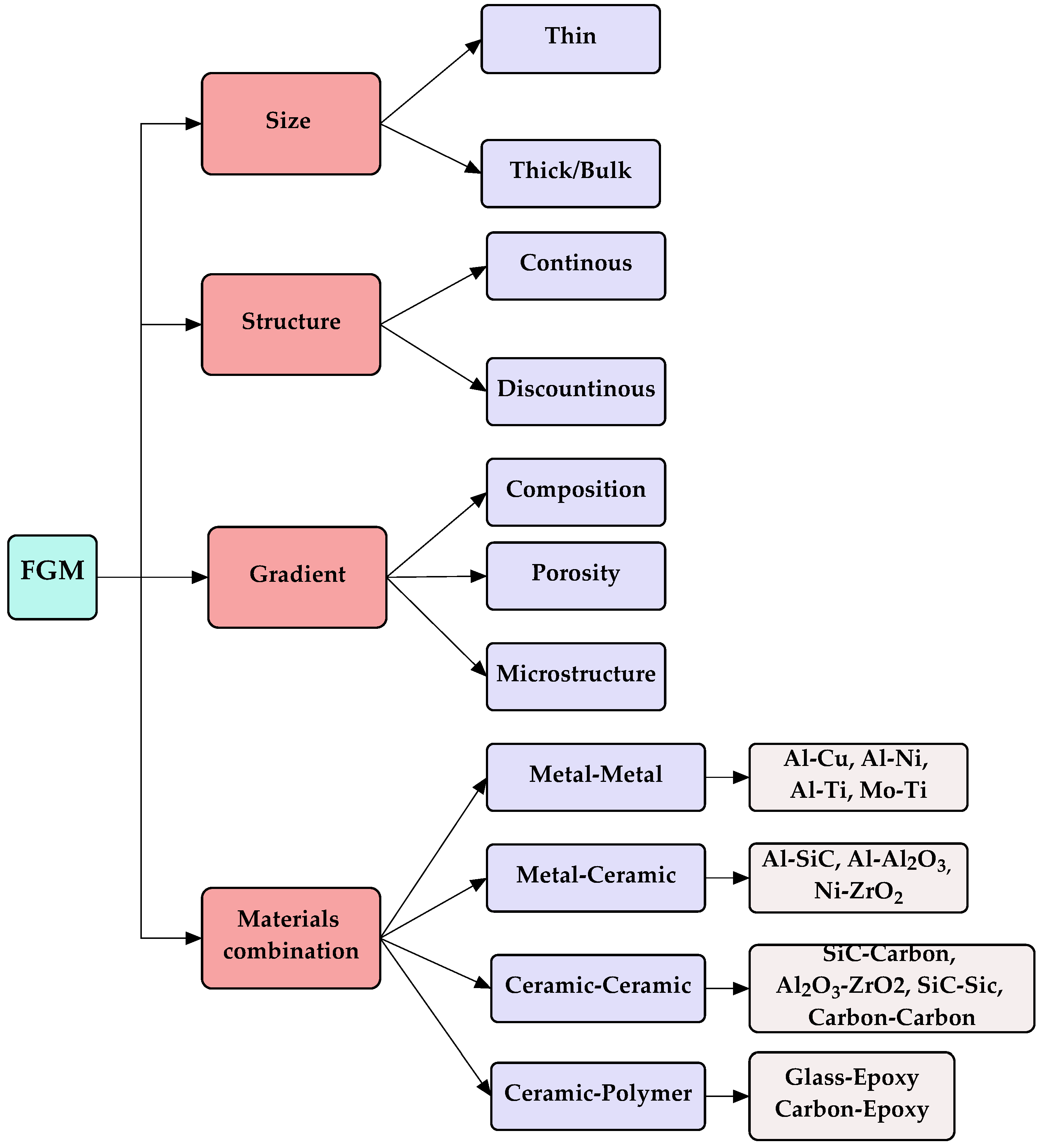
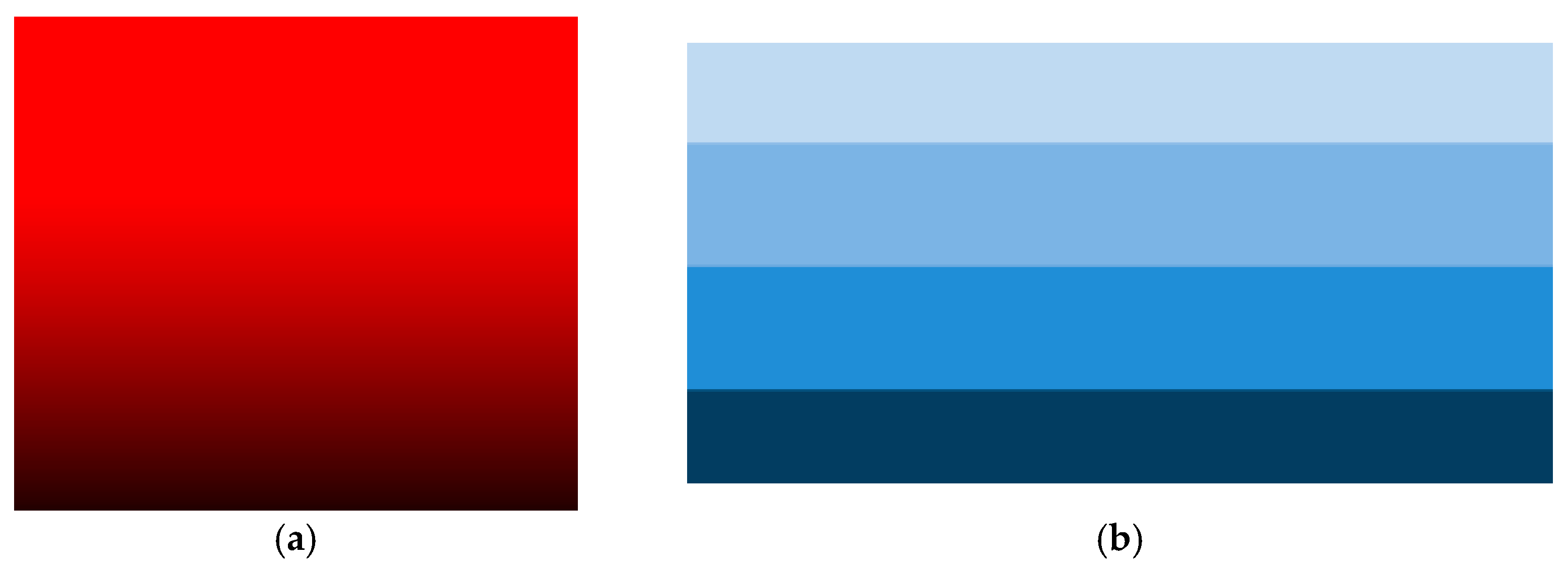
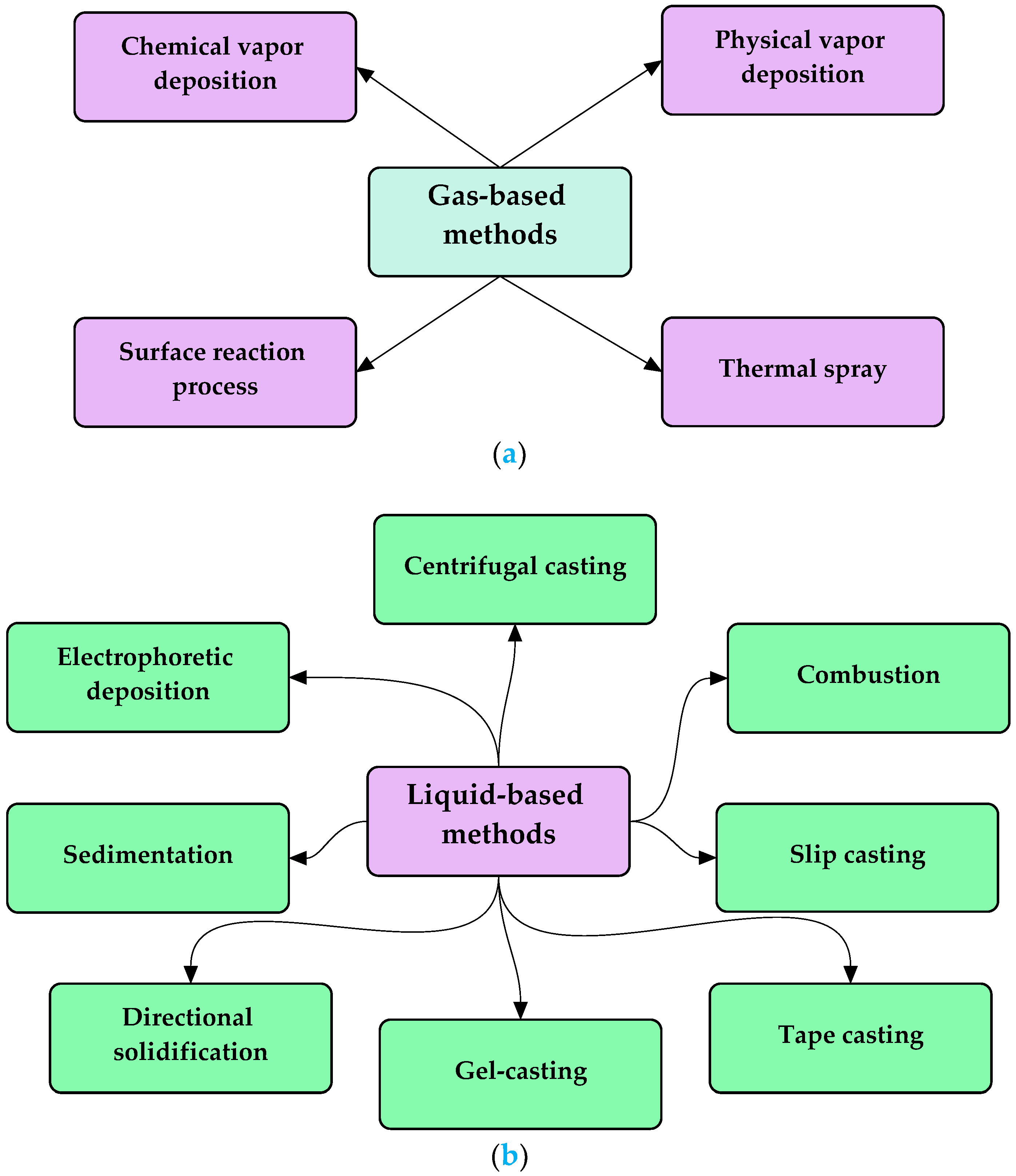

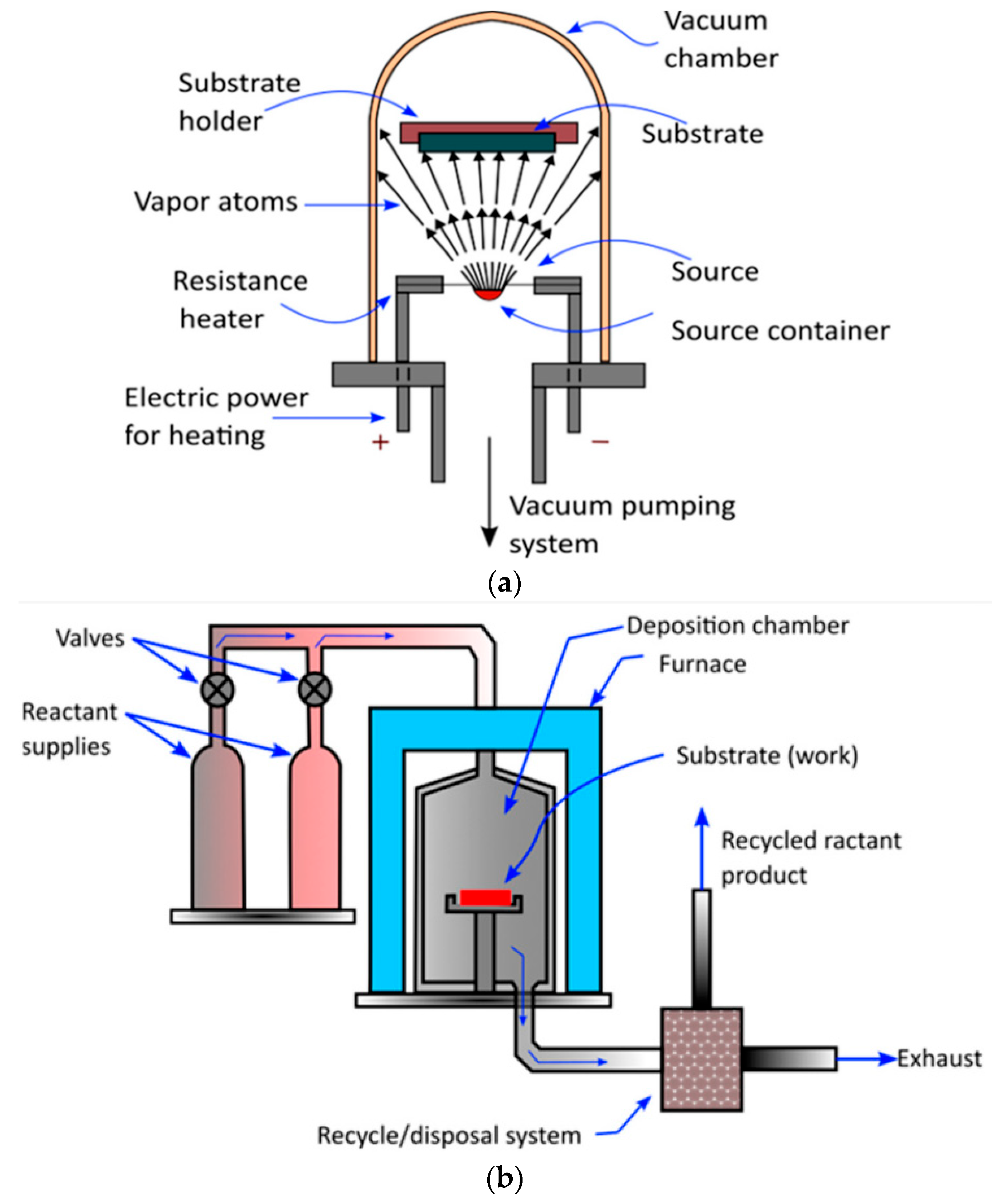

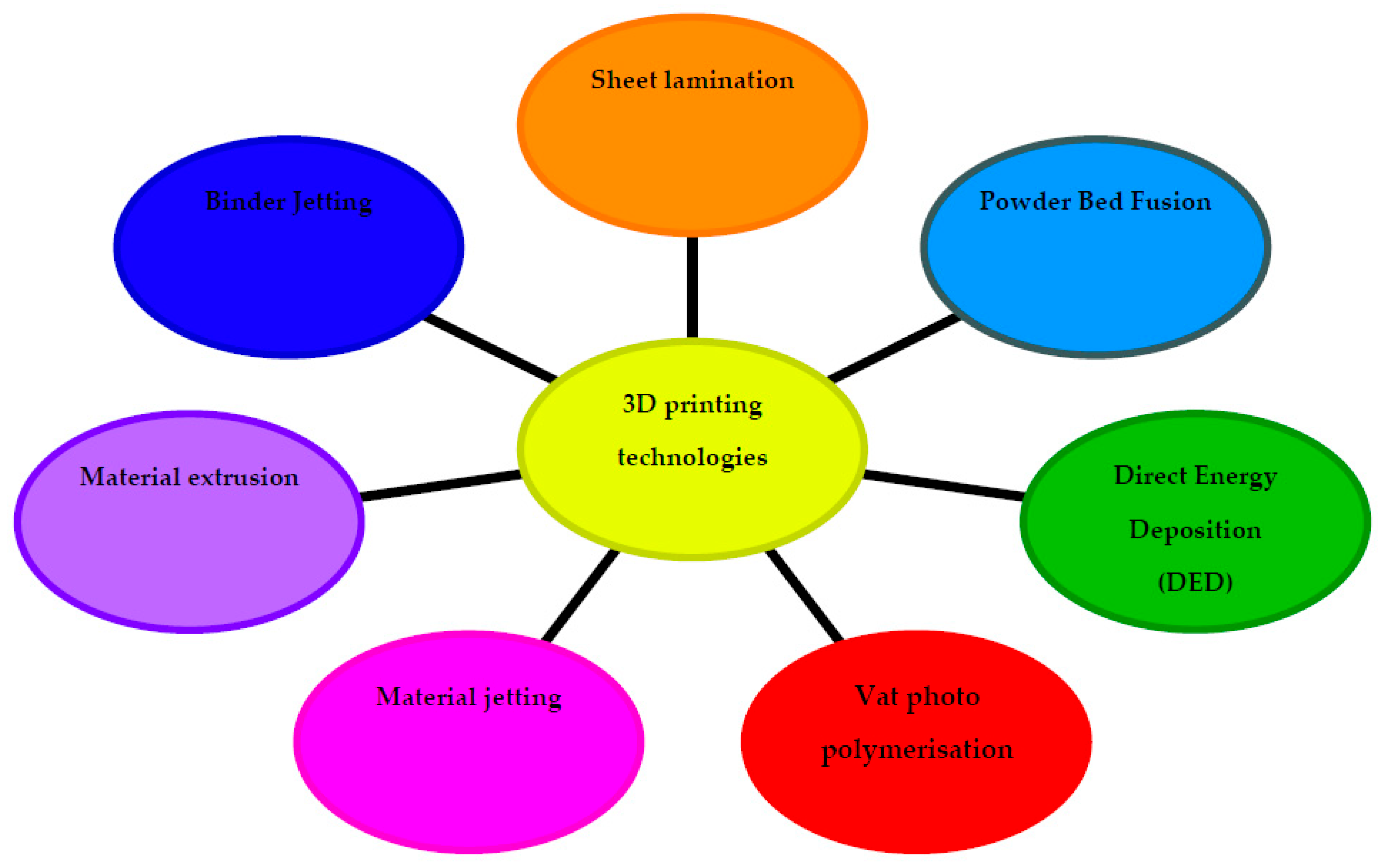
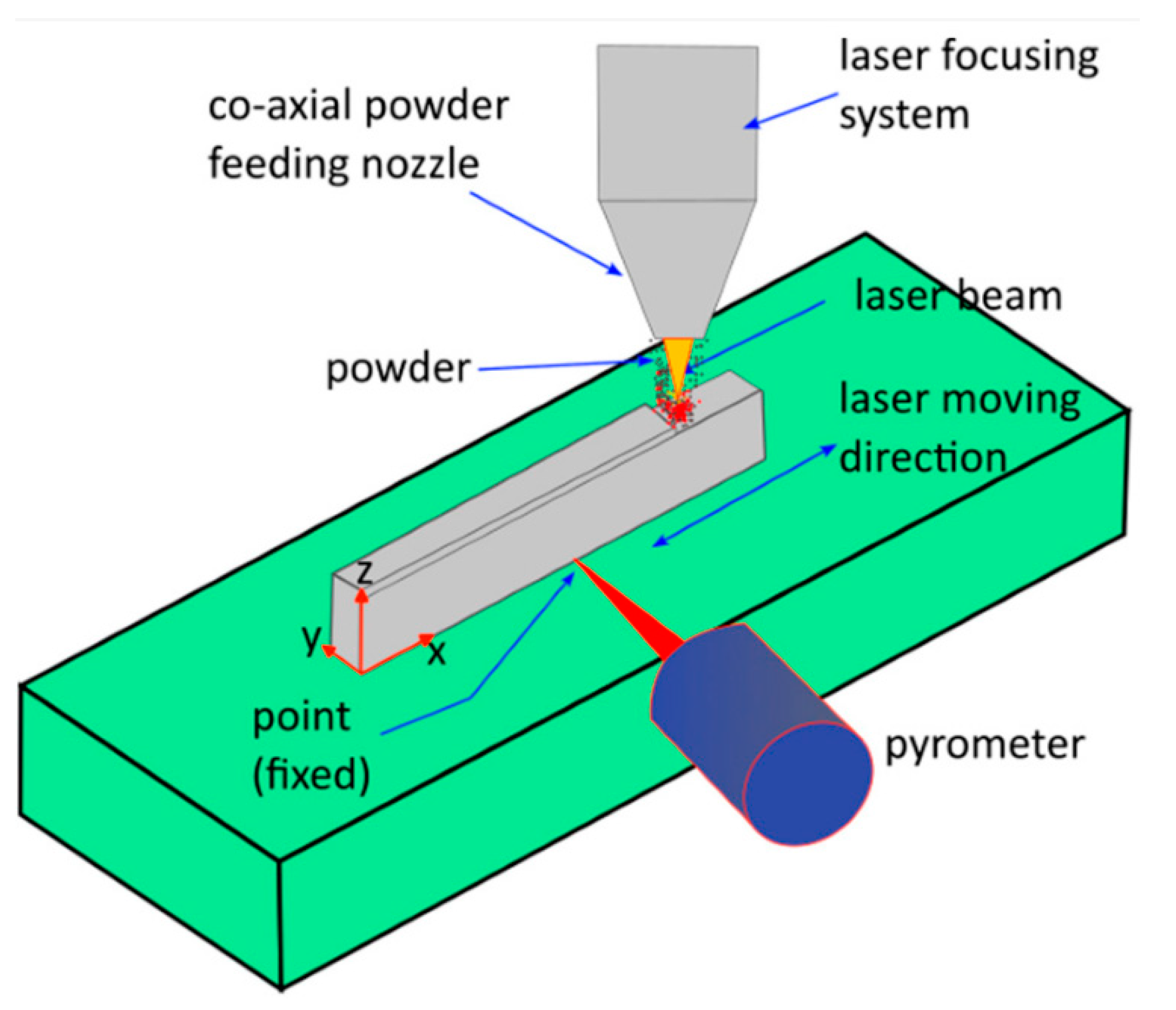
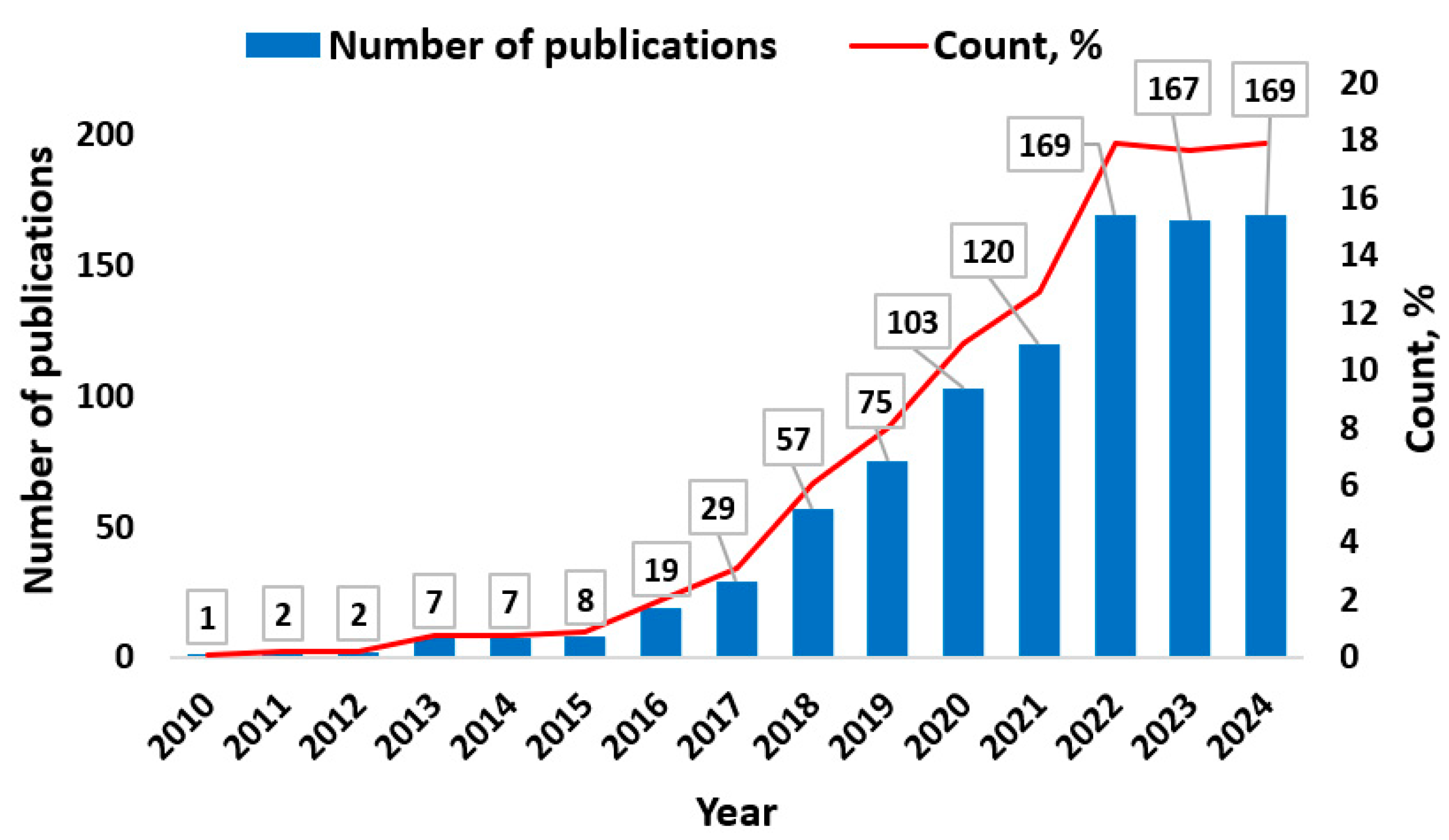
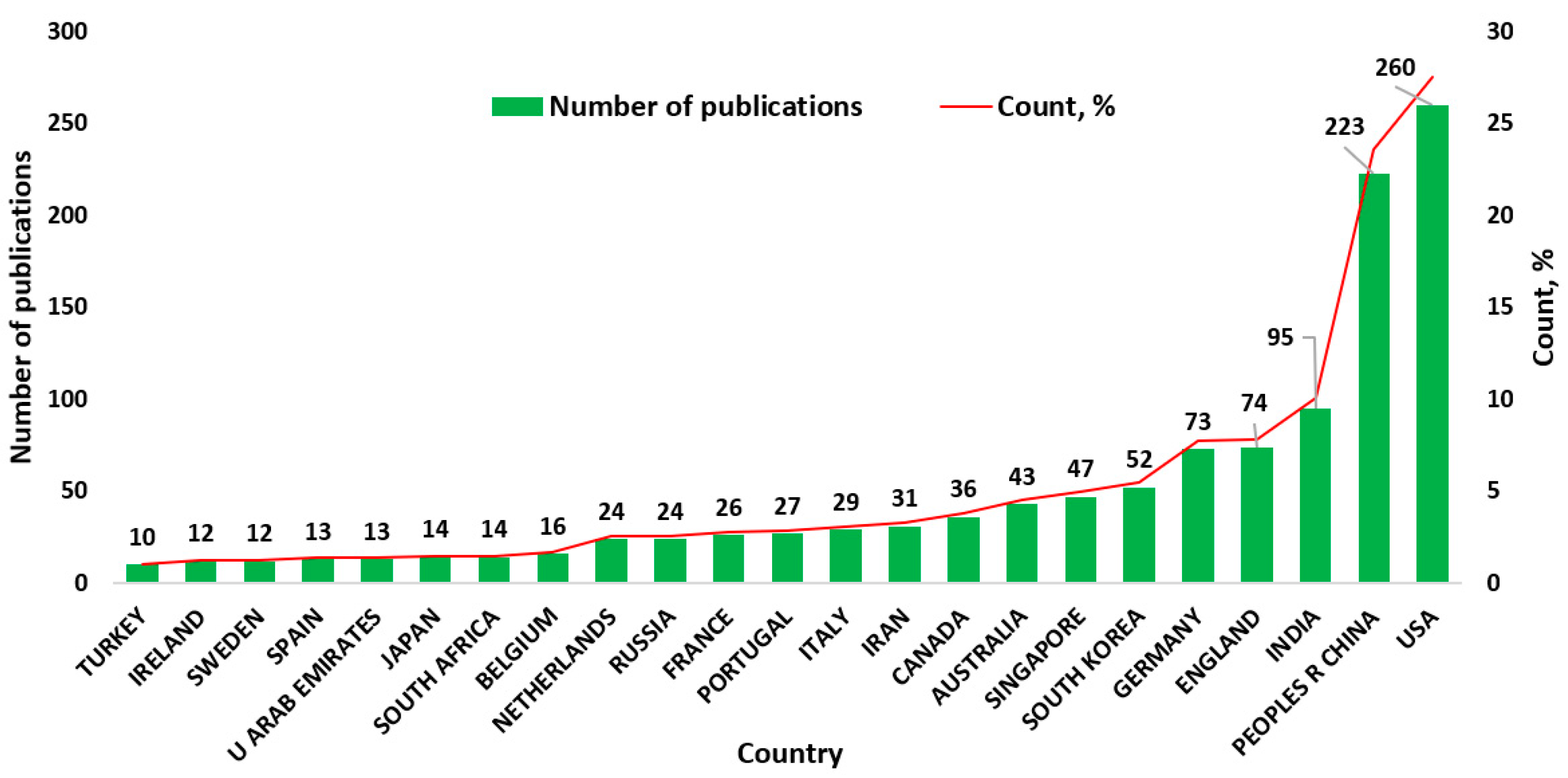


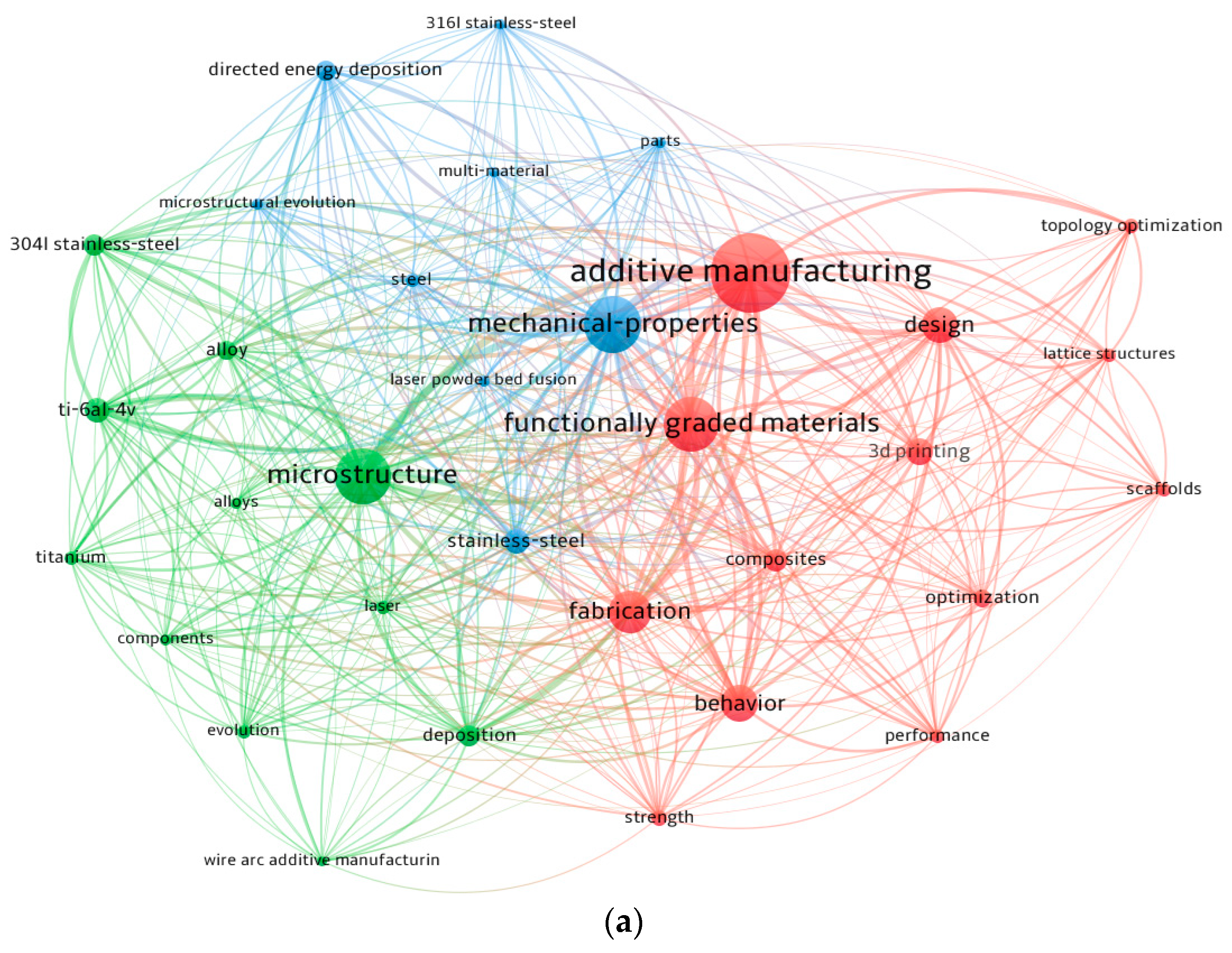


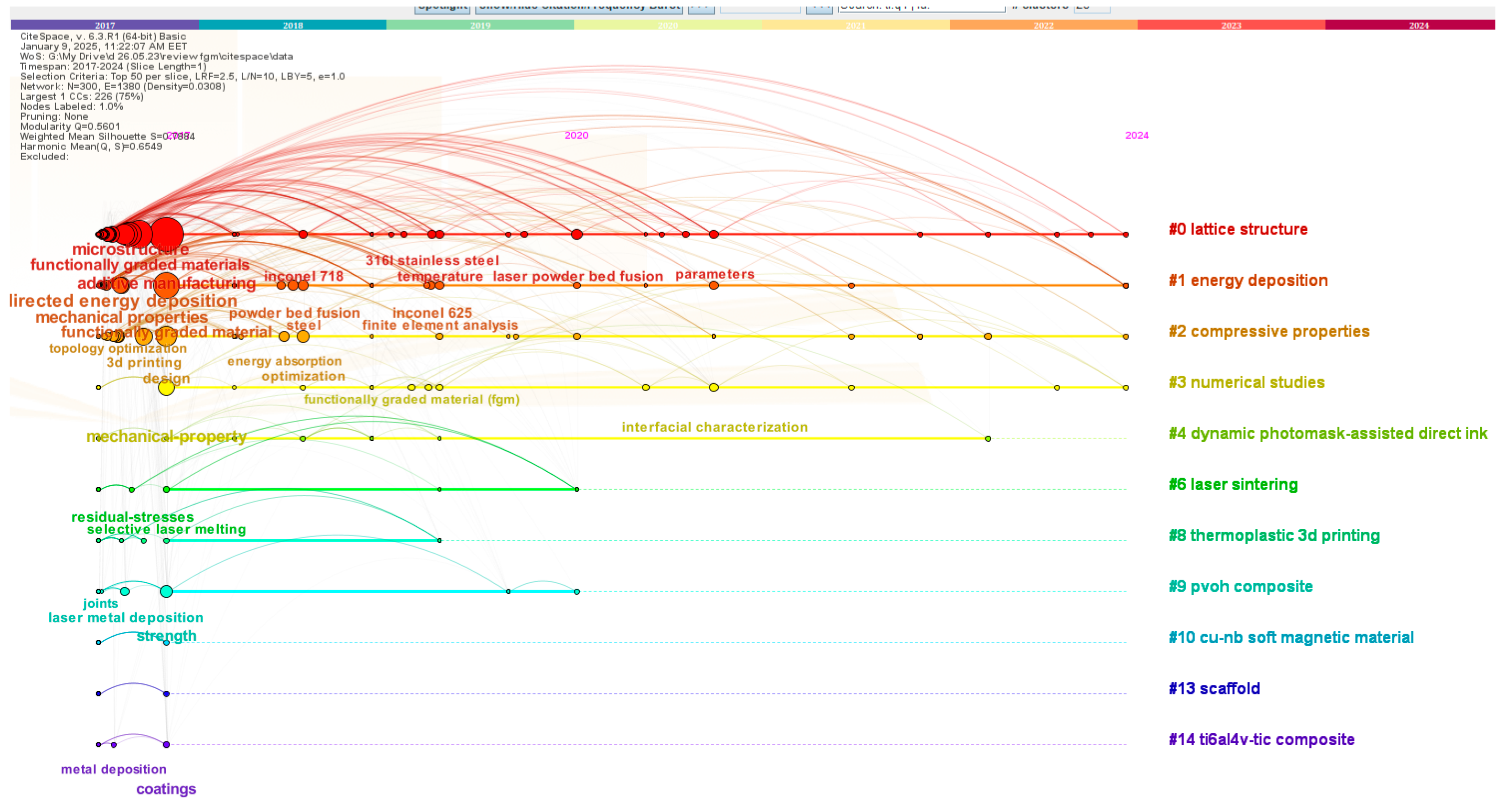

| Source | 3D Printing Method | Materials | Results of Mechanical Testing |
|---|---|---|---|
| [140] | DED | functionally graded Ti-based Ti6Al4V/TiC | The optimized functionally graded Ti-based sample showed superior wear resistance and a microhardness of 1200 VHN, four times that of the Ti6Al4V substrate. |
| [71] | functionally graded Ti-based | Elastic modulus ranged from 75 to 110 GPa Vickers hardness ranged from 280 HV to 360 HV | |
| [141] | ferritic and austenitic alloys | Vickers hardness ranged from 150 HV to 350 HV | |
| [142] | titanium-aluminide graded material ranging from pure Ti to Ti-50 at% Al. | UTS ranged from 450 MPa to 600 MPa YS ranged from 400 MPa to 535 MPa The hardness varies significantly, ranging from 248 HV to 518 HV With increasing Al content, the microhardness and tensile strength of Ti-Al FGMs rise to a peak and then decline, influenced by multiple factors. | |
| [143] | Ti/Ti6Al4V | Elastic modulus varied from 105 GPa to 150 GPa Hardness varied from 1.5 GPa to 3.2 GPa | |
| [144] | Inconel 625/316L | Average YS—398 ± 33 MPa and UTS—564 ± 31 MPa | |
| [145] | Ti-Mo alloy (mixture of pure Ti and pure Mo (7.5 wt.%) powders) | YS decreases from 681 MPa to 579 MPa and UTS from 791 MPa to 686 MPa with increasing altitude from the base plate. Meanwhile, elongation improves from 10% to 25%, and Young’s modulus stays constant at 105 GPa. | |
| [146] | FGM from Ti-6Al-4V to SS316 | Vickers hardness varied from 270 HV to 452 HV | |
| [147] | TC11/Ti2AlNb dual alloy | The as-deposited samples had an average UTS of 1061 MPa and elongation of 2.2% at room temperature, which changed to 608 MPa and 23% at 650 °C, respectively. | |
| [77] | SLM | 316L/CuCrZr | Maximum UTS—318.2 ± 7.2 MPa (vertically integrated) and 519.8 ± 6.2 MPa (horizontally integrated). The average microhardness decreases from 234.5 HV ± 3.9 HV (316L) to 130.25 HV ± 5.65 HV (CuCrZr), with a maximum of 194.9 HV in the fusion zone. |
| [148] | FG Inconel 718 was fabricated with fine and coarse-grained regions. | YS varied from 574 ± 6 MPa to 5 91 ± 14 MPa UTS varied from 873 ± 14 MPa to 920 ± 23 MPa Young’s modulus varied from 131 ± 3 GPa to 155 ± 11 GPa Elongation to failure varied from 13 ± 2% to 18 ± 2% | |
| [149] | Cu–H13 steel | Average Vickers hardness—65 HV…530 HV UTS—288 MPa | |
| [150] | DMD | SS316L/IN625 | UTS ranged from 517 MPa to 532 MPa, function of laser power |
| [151] | LMD | 316 L/Inconel718 | The 10% composition gradient showed optimal tensile properties with a UTS of 527.05 MPa and elongation of 26.21%. |
| [152] | CP-Ti/Ti–0.4Ni | Hardness: 270.6 ± 10.4 HV Vertical sampling position: YS = 406 ± 5 MPa, UTS = 486 ± 2 MPa; Elongation: 15.0 ± 0.6% Horizontal sampling position: YS = 465 ± 30 MPa, UTS = 601 ± 24 MPa; Elongation: 6.9 ± 0.9% | |
| [153] | Inconel 625/AISI 413 | Hardeness: 200 HV…400 HV No significant hardness variation was observed across the FGMs | |
| [75] | AlSi10Mg/C18400 | Microhardness was 71.74 ± 7.5 HV in copper region and 119.06 ± 9.12 HV in aluminum region The tensile strength of Al/Cu SLM parts was 176 ± 31 MPa, while the flexural strength was approximately 200 MPa for Cu at the root and 500 MPa for Al at the root. |
| Journal | Number of Publications |
|---|---|
| Additive Manufacturing | 80 |
| Materials Design | 38 |
| International Journal of Advanced Manufacturing Technology | 30 |
| Materials | 26 |
| Journal of Materials Research and Technology JMRT | 24 |
| Journal of Alloys and Compounds | 23 |
| Metals | 23 |
| Materials Science and Engineering A Structural Materials Properties Microstructure And Processing | 22 |
| Journal of Manufacturing Processes | 20 |
| Materials Letters | 17 |
| Citation Counts | Node Name | Cluster ID |
|---|---|---|
| 45 | United States Department of Energy (DOE) | 0 |
| 37 | Indian Institute of Technology System (IIT System) | 1 |
| 32 | Pennsylvania Commonwealth System of Higher Education (PCSHE) | 0 |
| 27 | Pennsylvania State University | 0 |
| 24 | Pennsylvania State University—University Park | 0 |
| 21 | National Institute of Technology (NIT System) | 1 |
| 19 | Nanyang Technological University | 3 |
| 18 | Oak Ridge National Laboratory | 0 |
| 15 | Centre National de la Recherche Scientifique (CNRS) | 2 |
| 13 | University of California System |
| ClusterID | Size | Silhouette | Label Latent Semantic Index (LSI) | Label Loglikelihood Ratio (LLR) | Label Mutual Information (MI) | Average Year |
|---|---|---|---|---|---|---|
| 0 | 49 | 0.666 | additive manufacturing | lattice structure | co-v alloy | 2018 |
| 1 | 47 | 0.697 | additive manufacturing | energy deposition | co-v alloy | 2018 |
| 2 | 40 | 0.759 | additive manufacturing | Compressive properties | stiffness-tailored interface | 2018 |
| 3 | 20 | 0.876 | additive manufacturing | numerical studies | er70s-6 low carbon steel component | 2019 |
| 4 | 15 | 0.88 | multilevel triboelectric nanogenerator | dynamic photomask-assisted direct ink | additive manufacturing | 2018 |
| 6 | 13 | 0.91 | additive manufacturing | laser sintering | additive manufacturing | 2017 |
| 8 | 11 | 0.969 | graded material | thermoplastic 3D printing | additive manufacturing | 2017 |
| 9 | 10 | 0.833 | additive manufacturing | pvoh composite | additive manufacturing | 2017 |
| 10 | 9 | 0.998 | cu-nb soft magnetic material | cu-nb soft magnetic material | additive manufacturing | 2017 |
| 13 | 6 | 0.999 | a hybrid electrospinning and electrospraying 3D printing for tissue engineered scaffolds | scaffold (19.12, 1.0 × 10−4) | additive manufacturing | 2017 |
| 14 | 6 | 0.984 | mechanical properties | ti6al4v-tic composite | additive manufacturing | 2017 |
| Citation Counts | Node Name | Cluster ID |
|---|---|---|
| 367 | additive manufacturing | 0 |
| 226 | functionally graded materials | 0 |
| 201 | functionally graded material | 1 |
| 174 | microstructure | 0 |
| 173 | mechanical property | 0 |
| 156 | fabrication | 0 |
| 139 | behavior | 0 |
| 126 | design | 2 |
| 85 | 3D printing | 2 |
| 78 | mechanical-property | 3 |
| Bursts | Node Name | Cluster ID |
|---|---|---|
| 5.20 | lattice structures | 2 |
| 3.98 | topology optimization | 2 |
| 3.67 | cellular structures | 2 |
| 3.09 | simulation | 1 |
| 2.97 | laser metal deposition | 9 |
| 2.94 | functionally graded | 1 |
| 2.86 | powder bed fusion | 1 |
| 2.65 | selective laser melting | 6 |
| 2.61 | laser deposition | 1 |
| 2.48 | heat treatment | 0 |
| Category | Key Findings |
|---|---|
| Leading Country | USA (27% of publications), followed by China (23%) |
| Leading University | Indian Institute of Technology (IIT), Pennsylvania Commonwealth System of Higher Education (PCSHE), Chinese Academy of Sciences |
| Most Cited Institution | United States Department of Energy (DOE) (45 citations) |
| Top Research Topics | Additive Manufacturing, Functionally Graded Materials, Mechanical Properties, Topology Optimization, Microstructure |
| Trending Topics (Recent Years) | Lattice Structures, Simulation, Selective Laser Melting, Powder Bed Fusion |
| Most Influential Journal | Additive Manufacturing (80 papers) |
Disclaimer/Publisher’s Note: The statements, opinions and data contained in all publications are solely those of the individual author(s) and contributor(s) and not of MDPI and/or the editor(s). MDPI and/or the editor(s) disclaim responsibility for any injury to people or property resulting from any ideas, methods, instructions or products referred to in the content. |
© 2025 by the authors. Licensee MDPI, Basel, Switzerland. This article is an open access article distributed under the terms and conditions of the Creative Commons Attribution (CC BY) license (https://creativecommons.org/licenses/by/4.0/).
Share and Cite
Veres, C.; Tănase, M. A Bibliometric Review of 3D-Printed Functionally Graded Materials, Focusing on Mechanical Properties. Machines 2025, 13, 232. https://doi.org/10.3390/machines13030232
Veres C, Tănase M. A Bibliometric Review of 3D-Printed Functionally Graded Materials, Focusing on Mechanical Properties. Machines. 2025; 13(3):232. https://doi.org/10.3390/machines13030232
Chicago/Turabian StyleVeres, Cristina, and Maria Tănase. 2025. "A Bibliometric Review of 3D-Printed Functionally Graded Materials, Focusing on Mechanical Properties" Machines 13, no. 3: 232. https://doi.org/10.3390/machines13030232
APA StyleVeres, C., & Tănase, M. (2025). A Bibliometric Review of 3D-Printed Functionally Graded Materials, Focusing on Mechanical Properties. Machines, 13(3), 232. https://doi.org/10.3390/machines13030232






